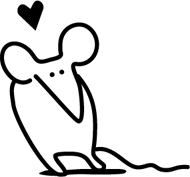Chromosome 16









Fossil genes, Nature’s flotsam
In a day and age when productivity drives society, it is strange to own genes that seem to be of no use. There they lie in our genome, like sunken ships that have been washed ashore. And, just like wrecks, they are part of the memory of ancient times. This said, though they are inactive genes today, they are still able to reveal precious information about the past of the human species.
Muscle repair
Piezo1: gene coding for a protein that is essential for the coordination of cellular response in the event of muscle damage. This protein could promote muscle regeneration in Duchenne muscular dystrophy.
External links
Corresponding protein in UniProtKB/Swiss-Prot
autism
BCKDK : if defective, this gene is involved in a form of autism, which can be treated with a certain diet.
marble bones
CLCN7: gene coding for a protein involved in chloride transport. When defective, this gene causes marble bone disease (osteopetrosis), a rare genetic disease characterized by abnormally dense bones.
External links
Corresponding protein in UniProtKB/Swiss-Protpigmentation
MC1R: This gene is involved in the colour of skin, hair (red) and eyes. Curiously, some variations in this gene also influences the efficiency of anaesthetics used by dentists.
External links
Corresponding protein in UniProtKB/Swiss-Prottaxi bubbles
FHOD1: This gene is involved in the formation of intracellular transport vesicles.
weight problem
FTO: a gene in which certain variations have been associated with the development of obesity.
ear wax
MRP8 / ABCC11: Gene involved in the transport of certain sweat components and in the type of ear wax. Europeans have wet wax while Japanese have dry wax.
External links
Protein Spotlight: Of earwax and migration
Corresponding protein in UniProtKB/Swiss-Prot
a taxi for oxygen
HBA2: This gene codes for a subunit of hemoglobin, a protein that is responsible for transporting oxygen in the blood.
External links
Corresponding protein in UniProtKB/Swiss-Prot
